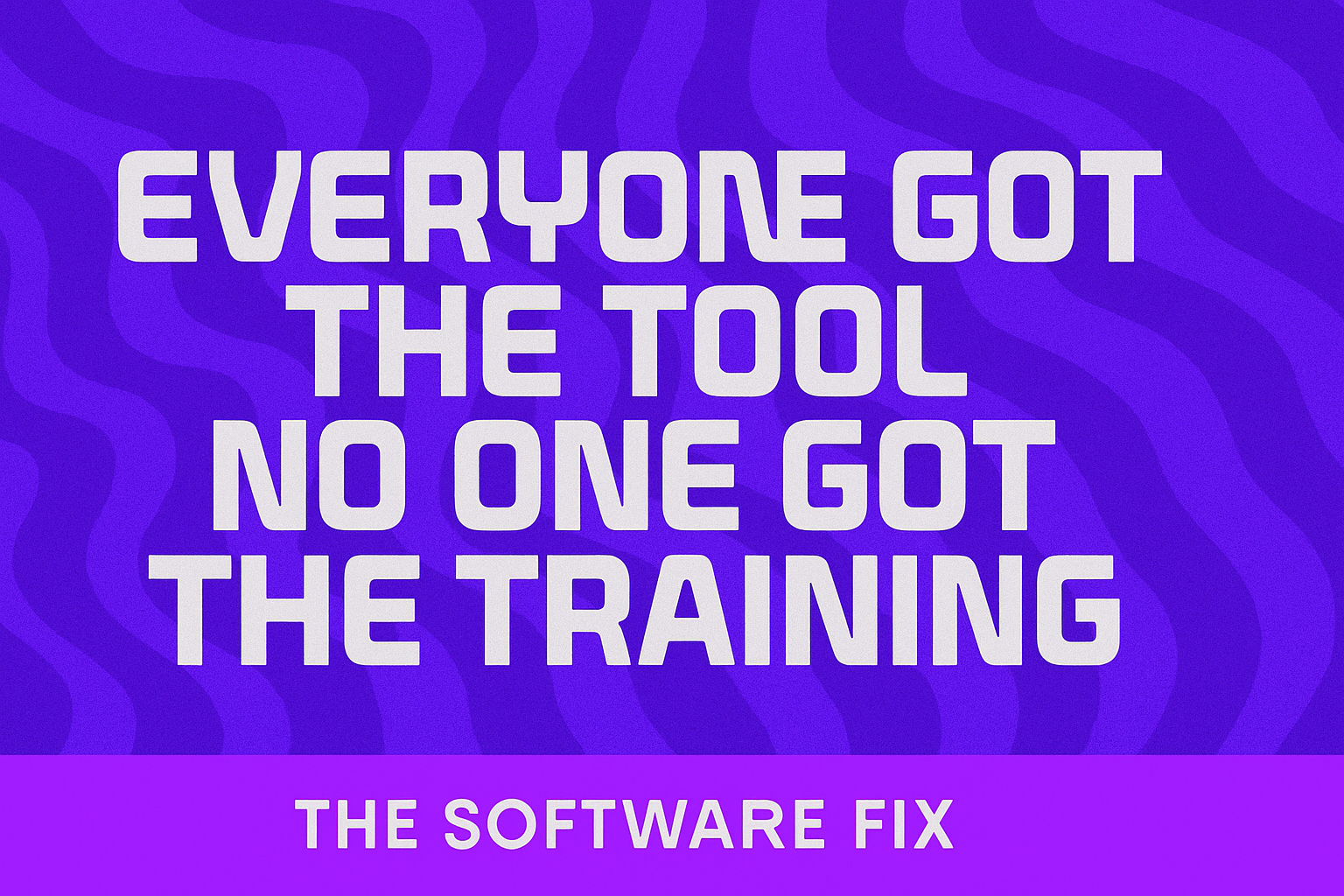Everyone Got the Tool, No One Got the Training

It is possible, that recently your team got access to a new SaaS tool at work, a productivity suite, an AI enhancement, etc. You know, the kind that shows up one day without any big announcement. Suddenly there’s a button called “Help me write” or “Summarize this doc” and you’re supposed to just get it.
No one really explained what it does. No one told us what it’s good at or what to avoid. It just appeared. Like many tools before it, Outlook, Gmail, Excel, Slack, Docs, it was “live.”
People are busy. Some play with it. Some don’t. After a few weeks, only a few use it regularly. The rest? They go back to their habits. Some even say they tried it, and it didn’t help. So, we say, “People aren’t adopting it.”
But the problem isn’t the people. It’s how we roll things out.
We think it's obvious. It’s not.
This is something I’ve seen again and again in big companies and smaller teams. We roll out new software thinking it’s just an upgrade. The interface is a bit different, maybe there’s a new icon. But it's “like the old one,” right?
We assume it’s simple enough. That people will figure it out. That someone will ask for help if needed. And sometimes it’s true, yes. At the surface level, you can click around and do what you did before. But most of the power the features that save time, that improve the workflow, that actually make life easier that stays hidden.
People keep working the same way because no one showed them a better one.
Most people want to learn, but not like that
In my case, I like to figure things out on my own. If I need help, I go to YouTube. I search for a short video, maybe 2 or 3 minutes. I want something clear that solves this problem I have right now.
Not a full training session. Not a big manual with screenshots. Just one small thing, quick and useful.
I believe many people do the same. They want to learn, but not in the way companies usually offer training. Not a 1-hour video. Not a 20-page PDF. Just something small and clear.
And when they can’t find that, they either keep struggling, or they stop trying.
So... who should fix this?
That’s a tricky question. The vendor? They give you some support pages, some intro videos, but let’s be honest, they’re usually hard to find or boring to watch. Internal IT? Maybe, but they’re also busy, and they can’t keep up with every feature.
Maybe it’s a shared job. The company should help people find what they need. But it doesn’t mean build everything from scratch. Just show people where to look. Maybe collect some good videos, or partner with creators who already explain these things well. Even better, ask the team to share tips with each other. Someone always finds a trick first let them be the teacher.
I’ve seen good results from just one person showing a 5-minute demo in a team meeting. No slides, no formality, just “look, this is how I use it.” That’s enough to spark ideas.
The real adoption is not turning it on. It's people using it with confidence.
We spend so much energy choosing the right software. We compare features, we talk about AI, we sign the contracts. But once it’s installed, we think the work is done.
It’s not.
Real adoption means people use the tool well. They feel comfortable. They save time. They stop doing things the hard way.
If we really care about productivity, we need to care about how people learn. Not just what tool we give them. The better the support, the better the results.
We don’t need perfect training programs. But we need to guide people better. Show small things, often. Make it easy to ask questions. Make it okay to say “I don’t get it yet.”
Because everyone got the tool—but not everyone got the training.

